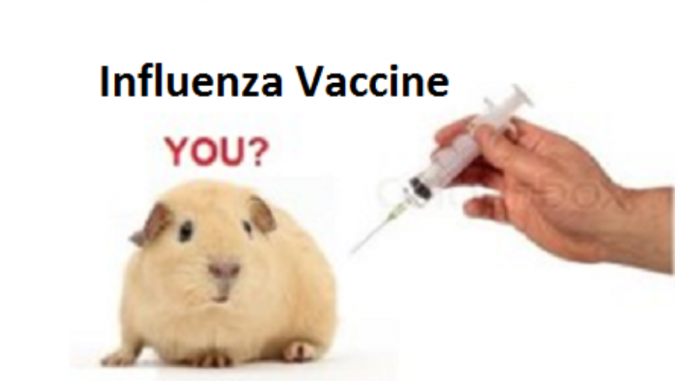
ORIGINAL ANTIGENIC SIN (OAS): Why this Year’s Flu Vaccine Could Make You Sicker
(Part 1 of the Vaccine Series)
by: david / aka The Mountains Voice
February 26, 2018 / Big Canoe, Georgia
SUMMARY: Original Antigenic Sin (OAS) is a well researched concept dating back to the 1950’s. When a vaccine is mismatched with the virus it is supposed to target there can be 3 possible outcomes: Neutral (No Impact); Good (Limited Protection); or BAD (Original Antigenic Sin). OAS can trigger a situation in which the body is tricked into delaying it’s defense mechanism, resulting in much more severe infection, increased risk for hospitalization & death. The 2017/2018 Influenza Vaccine is possibly experiencing an Original Antigenic Sin event. This article describes the process.
On January 4th 2018, a joint paper by heads of the CDC, NIAID, NIH, WHO & Australia’s III was issued,[1] stating that “the preliminary estimate of vaccine effectiveness against influenza A (H3N2) was only 10%“; that the virus either experienced “antigenic drift” — (Layman’s Term: mutated or changed) — as in previous mismatch seasons, away from the antibody formulation used in the vaccine, or the method of creating the vaccine had actually caused small protein drifts to occur.
Yet the CDC is still strongly recommending vaccination claiming that “some protection is better than none.” [2]
The limited protection that the mismatched vaccine would provide is referred to as cross-reactivity. However, to insinuate that vaccination will produce the benefits of cross-reactivity is a very misleading claim, and only tells one side of the story. The other side of the story involves something commonly referred to since the 1950’s as the “Doctrine of Original Antigenic Sin” [3 – 6]. This well established research subject helps to explain how “original antigenic sin could make vaccinated people more susceptible to the virus than those who are unvaccinated [7].“
CROSS-REACTIVITY vs. ORIGINAL ANTIGENIC SIN
Normally when someone is vaccinated for an existing flu strain – let’s call it Flu-1 – they develop Flu-1 antibodies. If Flu-1 “drifts” (mutates) far enough to create a new flu – let’s call it Flu-2 – then the Flu-1 antibodies are NOT a good match to the Flu-2 virus, and subsequently the Flu-1 vaccine created antibodies won’t work against the new Flu-2 virus, unless cross-reactivity is exhibited. Cross-Reactivity is a term which indicates the Flu-1 antibodies may still provide some limited protection against Flu-2 virus. So cross-reactivity is considered an “OK” thing, because some protection (even if minimal) is better than none.
Original Antigenic Sin (OAS) is completely different, and if triggered in the above scenario would result in a bad outcome. According to a 2012 research article released by Emory University, OAS “can impair immune responses to new flu strains [8].“ Imagine the scenario above in which a person gets a Flu-1 vaccine, develops Flu-1 antibodies, and then later catches the Flu-2, which has changed enough that the vaccine doesn’t even provide partial protection. OAS involves this scenario taking place PLUS one additional negative factor: Your body still has a false “immune memory” of the Flu-1 antibodies, and it thinks that the Flu-1 antibodies will still work against Flu-2 virus [9]. So when your body detects the Flu-2 infection, it launches the wrong response – putting all of its energy into creating the WRONG Flu-1 antibodies, and all the while the Flu-2 virus is multiplying and establishing itself in your body with a very high viral load.
INCREASING VIRAL LOAD – HOW OAS WORKS AGAINST YOU
Viral Load is a term for the amount of actual virus the body contains or has been exposed to, but a good analogy is to think of it as the number of soldiers in an invading army. The bigger the invading army – the harder it is to fight, and the more damage it can do. The military objective of the Body is to immediately attack and destroy the invading army (using the CORRECT antibodies) as fast as it can. A smaller invading force (low viral load) is easier to defeat, and the battle (sickness) is usually shorter. With a large invading force (high viral load), the battle (sickness) is harder and longer. Sometimes the body loses (and you die).
What OAS essentially does is to confuse and delay the body’s defense systems, thereby allowing the viral load (Invading Flu Army) to grow large and powerful before the Body can figure things out, and actually mount the correct defense. Once the body finally does figure things out, and correct antibodies are identified, and subsequently placed into the body’s “manufacturing line” to create the correct antibody army – the immune response is now behind, and facing an enormous uphill battle.
IF OAS is triggered by a vaccine that doesn’t match the strain of flu circulating (as is the case this year) – then the vaccine recipients are potentially in much worse condition than if they had never received the vaccine in the first place. If the vaccine recipient is also in a high risk category, then their chances of having major complications, being hospitalized, or dying increase. We are seeing enormous spikes in the hospitalization and mortality rates this year, exactly as would be expected in an OAS event.
WHAT TRIGGERS OR PREDICTS AN OAS EVENT?
So far there is no science capable of predicting for sure whether a mismatch of Flu-1 antibodies and Flu-2 Virus will result in:
A) No Protection but no Risk either (Neutral Outcome) or…
B) Cross-Reactivity (Minimal extra protection, but generally an OK Outcome) or…
C) Original Antigenic Sin (Bad Outcome with delayed immune response)
Health Officials are limited in their ability to plan for the antigenic drift of influenza viruses. It just happens – continually. That is why they come up with a new Vaccine makeup every year. Sometimes, they get it right, and the vaccine antibodies match the actual flu virus circulating. Sometimes, as in this year, they get it wrong. It doesn’t matter whether this is due to natural changes “in the wild” of the antigenic makeup of the virus, or in antigenic changes that result from poor manufacturing processes. The end result is the same – a slightly mismatched vaccine.
There are two distinct research paths into what mechanisms are involved in an OAS response actually occurring. One has to do with “Age Distance”, with many studies centering on how OAS is triggered over the age cycles of a person’s life. In short it involves a young person’s first experience with influenza, and the “immune memory” of that first experience being retained so that it hinders correct immune responses later in life, and also how that immune response evolves over the course of a person’s life. This approach offers an explanation for why some age groups do NOT experience the negative OAS effects of delayed immune response, and are thereby more or less severely impacted. Vaccine supportive studies usually focus on these results – minimalizing and ignoring other aspects of OAS.
The other path of research – perhaps the more important path in regards to vaccine use and our specific situation here – has to do with “Antigenic Distance” (how much genetic drift has occurred between Flu-1 and Flu-2 – either naturally or via manufacturing process). It is so far not an exact science, and in laymen’s terms it basically involves the viral mutation hitting an intermediate sweet spot that is just far enough away to not achieve the benefits of cross-reactivity, but close enough that it can still trigger a false “immune memory” reaction [9]. The precision of intermediate antigenic distance needed to trigger an OAS response also explains why, despite decades of “evidence established in humans”, and other studies reporting “similar observations in various animal models including mice, ferrets, and rabbits”, it is still controversial in some circles as to whether OAS is actually a real phenomenon [10]. This is primarily due to a few studies in which they could not determine an OAS response, and thereby launched erroneous, broad-based assumptions that therefore OAS did not exist.
A BASEBALL ANALOGY
Every week during baseball season millions of fans flock to ball parks, and in any given week they are thrilled as their favorite players “hit it out of the park” with a homerun. We KNOW that it is possible for a man with a bat to hit a ball far enough to go over that distant fence, because we have seen it with our own eyes countless times. This is similar to the way that we have seen through decades of studies and solid data – that Original Antigenic Sin exists. It is no more valid to claim that OAS isn’t real simply because a few limited studies didn’t observe the phenomenon – than it is to proclaim the impossibility of hitting a homerun simply because a sampling of 10 year olds couldn’t hit a ball 100 yards. Sometimes the subjects of study may simply not be well matched to the topic of the study.
MORE STUDIES AND CONCERNS
Most recently in humans, the 2009 H1N1 outbreak is suggested to have been an example of an OAS event [11, 12], and subsequently a great deal of new research and discussion has been generated on the subject [7 – 15], which continues to support the phenomena of Original Antigenic Sin as a “possible cause of viral immune escape [13]”, creating “a cause for concern in the context of human immune responses to influenza vaccination programs [14].”
OAS EVENT THIS YEAR?
Most of the major components for an OAS event do exist this year. The current vaccine is a very weak match for the H3N2 Flu Virus currently circulating. Furthermore, there are multiple subtype strains circulating, increasing the odds that one of them will trigger an OAS response.
When one strain does trigger an OAS response, then the odds increase that this will become the predominant flu strain for the season (as we are seeing this year). The resulting OAS Strain is the one best adapted to circumvent and defeat the antibody defense shields in the majority of the population. It will subsequently infect more people, and they will get sicker than normal, and as a result more virus will be shed – which will infect more people, and the cycle repeats. This is Viral Evolution in action, and it is part of a process called “subtype replacement”, which is often one of the generally considered factors in pandemic development [15].
COULD THIS TRIGGER AN EPIDEMIC / PANDEMIC?
We are already seeing pronouncements of this season having become “Epidemic”, and it is still possible that it could get worse, and a subsequent Pandemic season could result. H3N2 is a Type-A Flu Virus which has historically been responsible for some of the deadliest flu seasons on record. The CDC & WHO are still pushing the annual Flu Vaccine very hard. In an OAS scenario, many people that received the vaccine will not only have no vaccine induced immunity, their immunity will actually be compromised. This sets the stage for potential subtype replacement of the OAS Strain, and starts a cycle that not only sets up as a very bad flu season, but potentially becomes catastrophic for some that did get vaccinated and end up much sicker than they normally would have been. It is of note that the CDC began early in the season to laser focus on a 2nd line of defense involving antivirals (Tamiflu*, Relenza etc), and this is normally a discourse heard in epidemic / pandemic preparations. *Tamiflu has several widely known problems associated with its use, and this will be discussed in future articles in the Series.
SHOULD YOU GET THE VACCINE IF YOU HAVEN’T ALREADY?
This could be a tough personal decision for many. If an OAS event is not occurring in any of the strains, nor is there any cross-reactivity – then it will not make any difference at all whether a person gets the vaccine (in regards to flu protection or decrease in symptoms).
If an OAS event is not occurring but some limited cross-reactivity does, then getting the vaccine may slightly increase the odds of experiencing a slightly milder case of the flu – but it won’t protect someone from catching it.
But if an OAS event is occurring – then what is already a very serious strain of influenza could be being made dramatically worse for some of those receiving the vaccine, especially for those in a high risk category. Like many things in this life, nothing is guaranteed, and often we simply have to make the most informed decision we can.
BASIS FOR A VACCINE DECISION
The world has a population of over 7 Billion people, and has become increasingly complex and globally connected. In matters of infectious disease, we look more and more to our healthcare professionals (CDC, WHO, NIH, NIAID etc) to guide us. The scope of decisions they are asked to make have become increasingly difficult and challenging. It is understandable that when considering the well-being of Millions or Billions of lives, it is easy to fall into the mindset that, “The needs of the many, outweigh the needs of the few [16].” So every year vaccine programs are touted – even though protection rates are often relatively low (40% – 60% on a good year, and 10% – 13% in a not so good year) and a certain percentage of people have complications – because the needs of the many are for the most part looked after.
But sometimes circumstances change, and the path becomes a little less certain. This is such a year in the vaccine business. The vaccine makers didn’t get it right – again. There is not necessarily shame in that – because the evolutionary nature of the influenza virus tells us that this will occasionally happen. But there is shame in stubbornly sticking to a poorly chosen path; in not honestly considering the data at your disposal; in failing to be truthful to those that are following you; neither informing people when the path could be dangerous nor being specific about what those dangers might be.
It is times like these – when things aren’t going as planned in the big picture – that perhaps it should be considered that sometimes “the needs of the one, outweigh the needs of the many [17]”, and in order for citizens to be able to make intelligent, informed and INDIVIDUAL decisions regarding whether or not to get the vaccine – we need our public health officials to be transparent and clear concerning all of the facts.
The Doctrine of Original Antigenic Sin and the associated potential risks are well known and researched, and yet never publically talked about. Those in the Media that are assigned to cover our Healthcare Organizations either fail to ask the obvious questions, or lob softball questions that are almost designed to illicit a pre-acknowledged response. Why?
EARLY WARNING SIGNS
We are clearly seeing higher death rates this season, and this could be a very telling signal that an Original Antigenic Sin event is underway. One of the greatest Pandemic Influenza events of modern history started in a similar manner as this year. The 1918 Pandemic came in 3 waves… an initial deadly Winter Season, then an even more deadly, rare Summer Season as the virus went through more changes, and then the Fall when the virus ravaged the globe killing 10’s of Millions of people. 2 things also NOT being talked about, and that the average citizen is alarmingly in the dark about, is how concerned the global health community is regarding 2 “Bird Flu” strains that are on the very near horizon, specifically H5N1 & H7N9 [18], both of which are just a mutation or two away from potentially launching a global pandemic. Currently H7N9 has a 39%+/- fatality rate, and H5N1 a 60%+/- fatality rate. So far only small pockets of person-to-person spread have popped up. To date these have been very short lived, but the remaining degree of antigenic drift needed to allow these influenza viruses to effectively and rapidly spread between humans is growing smaller every day. A pandemic is coming.
Peace,
– david / publisher
Focus on Big Canoe, GA
* a publication of The Mountains Voice
References
1. Chasing Seasonal Influenza — The Need for a Universal Influenza Vaccine; jointly published on November 29, 2017 by: Catharine I. Paules, M.D., Sheena G. Sullivan, M.P.H., Ph.D., Kanta Subbarao, M.B., B.S., M.P.H., and Anthony S. Fauci, M.D.
http://www.nejm.org/doi/full/10.1056/NEJMp1714916
2. CDC Media Briefing associated with Press Release on Friday, February 9, 2018
Transcript: https://www.cdc.gov/media/releases/2018/t0209-flu-update-activity.html
Audio: https://www.cdc.gov/media/releases/2018/t0209-flu-update.mp3
3. Francis T. 1955. The current status of the control of influenza. Ann. Intern. Med. 43:534–538. http://dx.doi.org/10.7326/0003-4819-43-3-534.
4. Davenport. F. M. and Hennessy, A. V. (1956) Serologic recapitulation of past experiences with influenza A: antibody response to monovalent vaccine. J. Exp. Med. 104. 85—97.
http://www.ncbi.nlm.nih.gov/pmc/articles/PMC2136633/pdf/85.pdf
5. Francis T. 1960. On the doctrine of original antigenic sin. Proc. Am. Philos. Soc. 104:572–578.
6. Disquisitions on Original Antigenic Sin: I. Evidence in Man; SFS Groth, RG Webster – The Journal of Experimental Medicine, 1966. http://www.ncbi.nlm.nih.gov/pmc/articles/PMC2138235/pdf/331.pdf
7. Original sin and the risk of epidemics. University of Cambridge Research; published 10 Oct 2012
http://www.cam.ac.uk/research/news/original-sin-and-the-risk-of-epidemics
8. Flu vaccine research: Overcoming ‘original sin’ – Emory University; published August 17, 2012
http://www.sciencedaily.com/releases/2012/08/120817092509.htm
9. Pan K (2011) Understanding Original Antigenic Sin in Influenza with a Dynamical System. PLoS ONE 6(8): e23910. doi:10.1371/journal.pone.0023910
http://www.plosone.org/article/fetchObject.action?uri=info%3Adoi%2F10.1371%2Fjournal.pone.0023910&representation=PDF
10. Kim JH, Skountzou I, Compans R, Jacob J (2009) Original antigenic sin responses to influenza viruses. J Immunol 183: 3294–3301.
http://www.jimmunol.org/content/183/5/3294.full.pdf
11. Skowronski DM, De Serres G, Crowcroft NS, Janjua NZ, Boulianne N, et al. (2010) Association between the 2008–09 Seasonal Influenza Vaccine and Pandemic H1N1 Illness during Spring–Summer 2009: Four Observational Studies from Canada. PLoS Med 7(4): e1000258. doi:10.1371/journal.pmed.1000258
http://www.plosmedicine.org/article/fetchObject.action?uri=info%3Adoi%2F10.1371%2Fjournal.pmed.1000258&representation=PDF
12. Viboud C, Simonsen L (2010) Does Seasonal Influenza Vaccination Increase the Risk of Illness with the 2009 A/H1N1 Pandemic Virus? PLoS Med 7(4): e1000259. doi:10.1371/journal.pmed.1000259
http://www.plosmedicine.org/article/fetchObject.action?uri=info%3Adoi%2F10.1371%2Fjournal.pmed.1000259&representation=PDF
13. Morens DM, Burke DS, Halstead SB. The wages of original antigenic sin. Emerg Infect Dis 2010; 16(6):1023–4.
http://www.ncbi.nlm.nih.gov/pmc/articles/PMC3086238/pdf/10-0453_finalC.pdf
14. Kim JH, Davis WG, Sambhara S, Jacob J. Strategies to alleviate original antigenic sin responses to influenza viruses. Proc Natl Acad Sci U S A 2012; 109:13751–6.
http://www.ncbi.nlm.nih.gov/pmc/articles/PMC3427092/pdf/pnas.200912458.pdf
15. The impact of the pandemic influenza A(H1N1) 2009 virus on seasonal influenza A viruses in the southern hemisphere, 2009. Euro Surveill. 2010;15(31):pii=19631.
http://www.eurosurveillance.org/images/dynamic/EE/V15N31/art19631.pdf
16. Star Trek II: The Wrath of Khan (1982) *
17. Star Trek III: The Search for Spock (1984) *
18. Global alert to avian influenza virus infection: From H5N1 to H7N9
https://www.ncbi.nlm.nih.gov/pmc/articles/PMC4001451/
* I could not resist the Start Trek quotes, for it seems that striking a balance between the two is becoming more and more difficult in this world – as the web of global growth and special interests sometimes seems to leave the interests of the individual behind. I understand well the need for rules, laws and strong governmental leadership in a civilized world but is it not written in scripture,“What man of you, having an hundred sheep, if he lose one of them, doth not leave the ninety and nine in the wilderness, and go after that which is lost, until he find it?”
ACKNOWLEDGEMENTS
© 2014 – 2020 david h.h. / The Mountains Voice
All writings, articles and publications may be reprinted or redistributed in their entirety without further permission providing a direct link to the original article is provided, or a direct citation reference to the title, author, circa reference date & general website is provided. Suggested citation method: < “insert title of writing”; published by david h.h.; c.2020; themountainsvoice.com >
ABOUT THE AUTHOR: david is an independent writer/journalist/researcher and publisher. In specific regards to the Infectious Disease Series, david began researching infectious diseases (primarily influenza) in 2001, and was at the time one of the first bloggers to identify H5N1 as a potential future pandemic source. He has since consistently kept updated in his personal research into influenza and related infectious disease issues.
ABOUT THEMOUNTAINSVOICE.COM: The website will act as a central document, research and press portal for dissemination of information to the public. Information will be direct marketed through various methods, including social media and traditional print advertising.
ABOUT FOCUS ON BIG CANOE, GA: Central News Site. A single Community selected for reasons to be revealed in time – but for now to simply focus on.
ABOUT THE VACCINE SERIES: Research has been accumulated and is being compiled into a few more followup articles. Vaccine effectiveness, alternative treatment effectiveness, and comparative study results between the two are some of the future topics to be explored. Other under-reported, emerging global pandemic threats including H7N9 and H5N1 (the Bird Flus) will be examined, as well as other potential global disease threats, such as SARS, MERS-CoV etc.
FUNDING: Funding for TheMountainsVoice.com is provided by public donation and private advertising. For information on how you can support efforts to increase the quality, scope and reach of our publications, please visit us online at www.TheMountainsVoice.com/funding
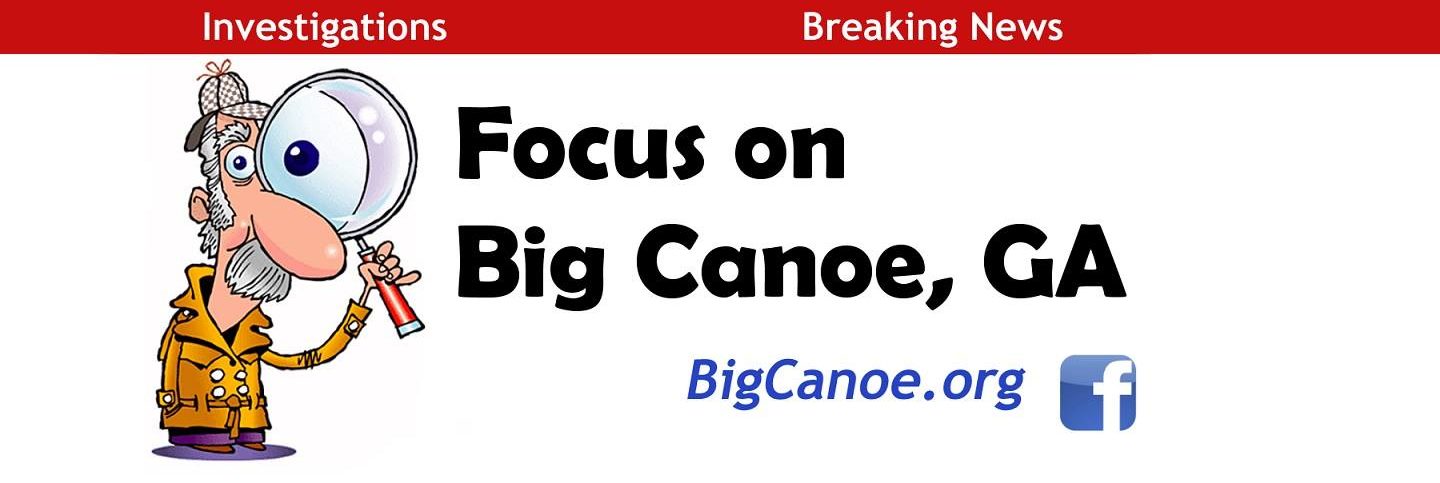
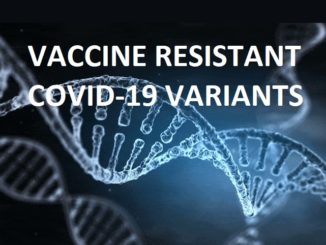
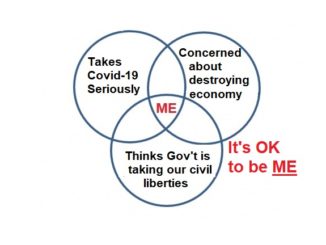
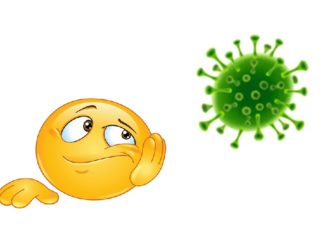
Be the first to comment